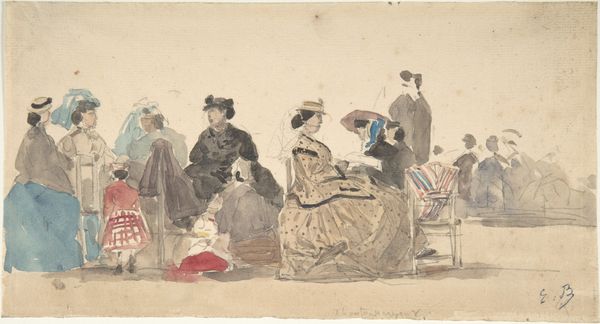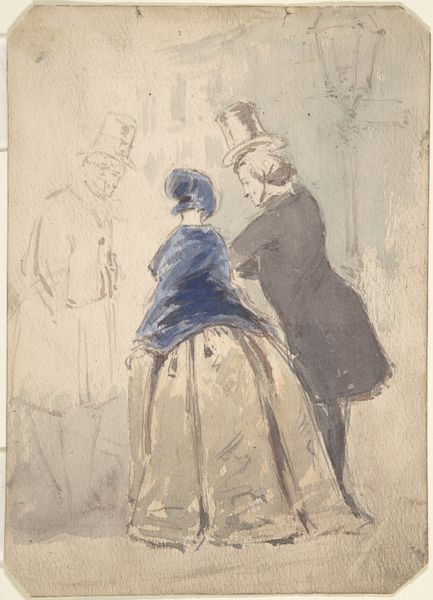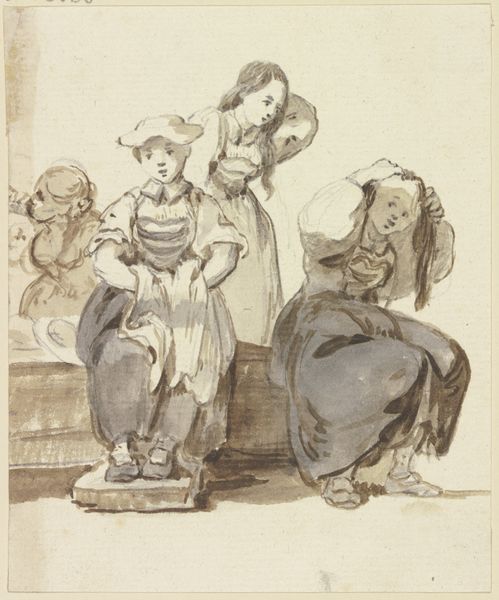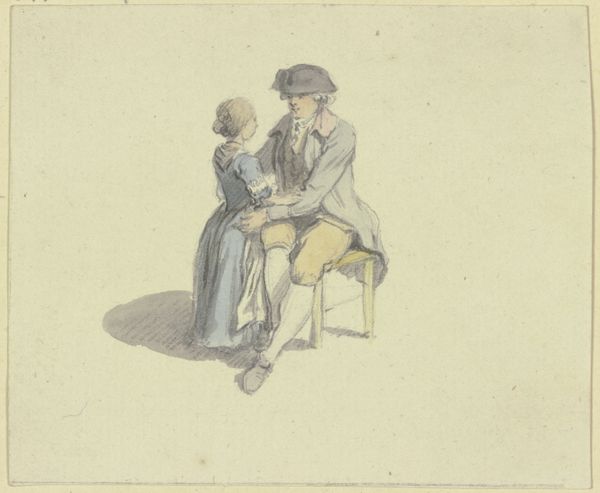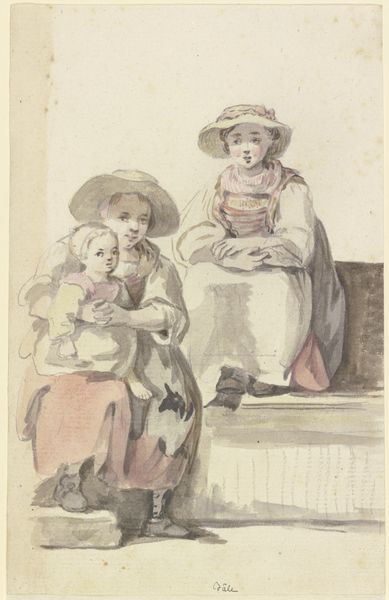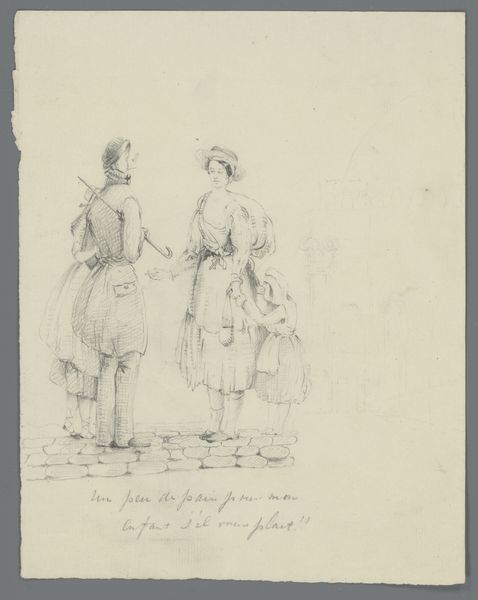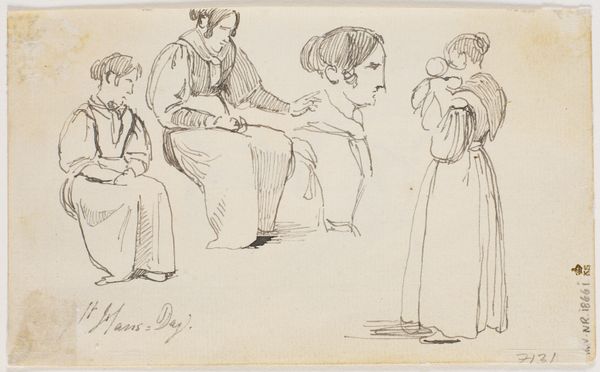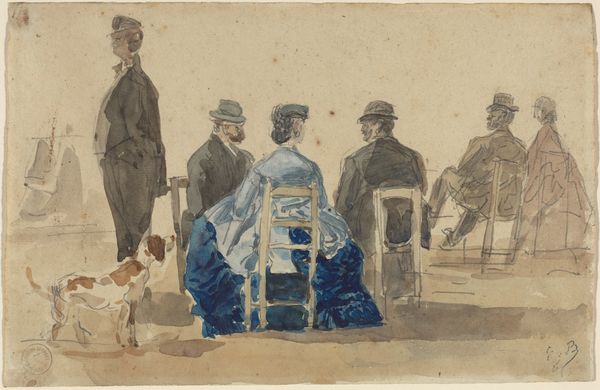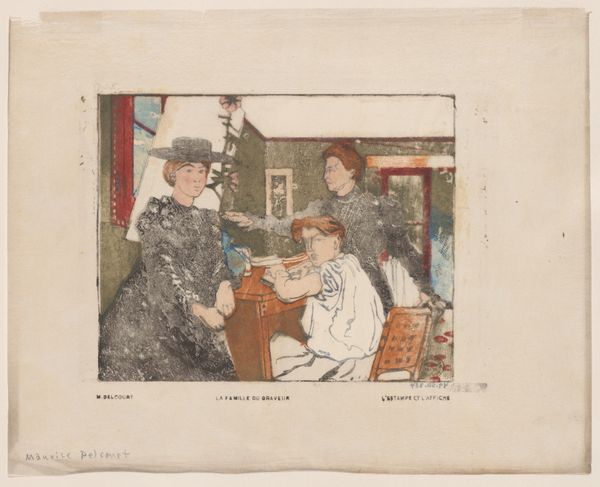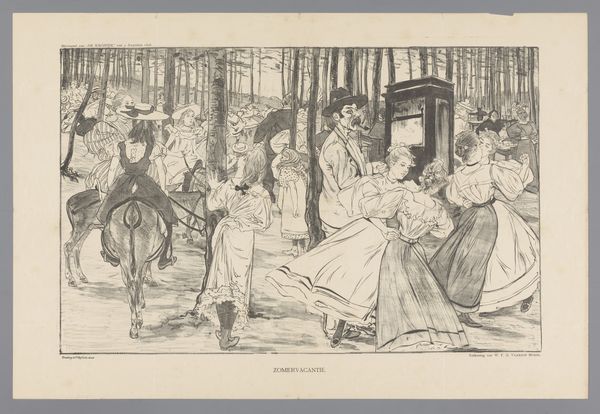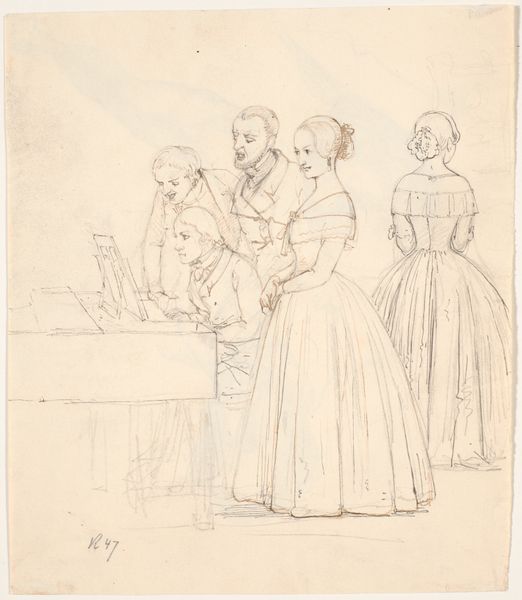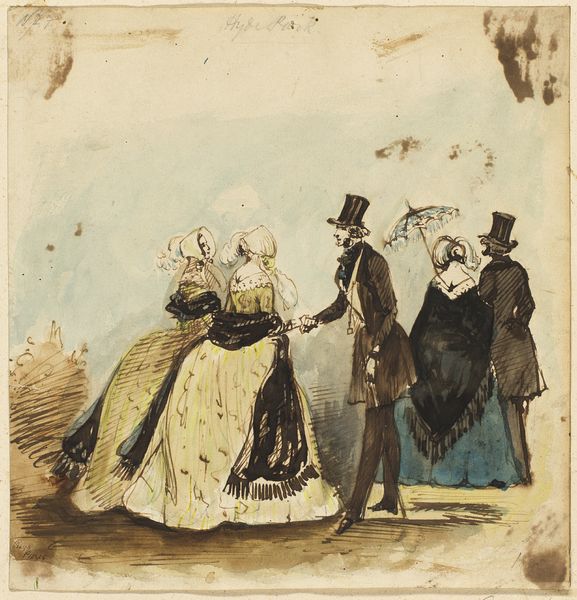
Copyright: Public Domain
Curator: We are looking at "Three children from Schwalm," a watercolor painting made in 1894 by Jacob Happ. Editor: What strikes me first is its softness. The color palette is gentle, muted; everything appears almost dreamlike, like a memory fading at the edges. Curator: Happ uses watercolor in a way that suggests rather than dictates. See how the children's faces, though not sharply defined, convey individuality? This suggests his keen observation of these Schwalm children. Editor: Absolutely, there's a delicate tension between the general and the specific. The cultural context here is palpable: the traditional Schwalm clothing signifies a very particular place and time, an assertion of regional identity during a period of immense change. Curator: Precisely. The structural arrangement too is compelling. The group portrait is designed in a subtle pyramidal composition where children on the sled serve as the center of interest with the one adult/older child at the rear of the structure, giving stability and weight, don't you think? Editor: The positioning really affects how the piece speaks to us, doesn't it? It's not just about the aesthetic arrangement, but about relationships of social standing; who leads, who follows, who watches. How would such portrayals affect a town's perception, or a country's idea of its various regions? Curator: These elements of social representation bring genre-painting themes to the surface through the materiality of watercolor; its fluidity allows for this capture of fleeting childhood but roots it in a cultural landscape, wouldn't you agree? Editor: Indeed. Considering its initial reception, it must have stirred interesting debates on regionalism versus encroaching urbanism, given its frank representation. It reminds us that the value of art resides in more than just what meets the eye, it's also in the quiet historical debates and political discussions art inspires. Curator: The painting’s aesthetic success certainly lies in Happ's masterful treatment of the medium to hint at broader cultural narratives. Editor: So much is said in its deliberate understatement; now when I look at it, its calmness speaks of unresolved social tensions brewing beneath its still, serene surface.
Comments
No comments
Be the first to comment and join the conversation on the ultimate creative platform.

